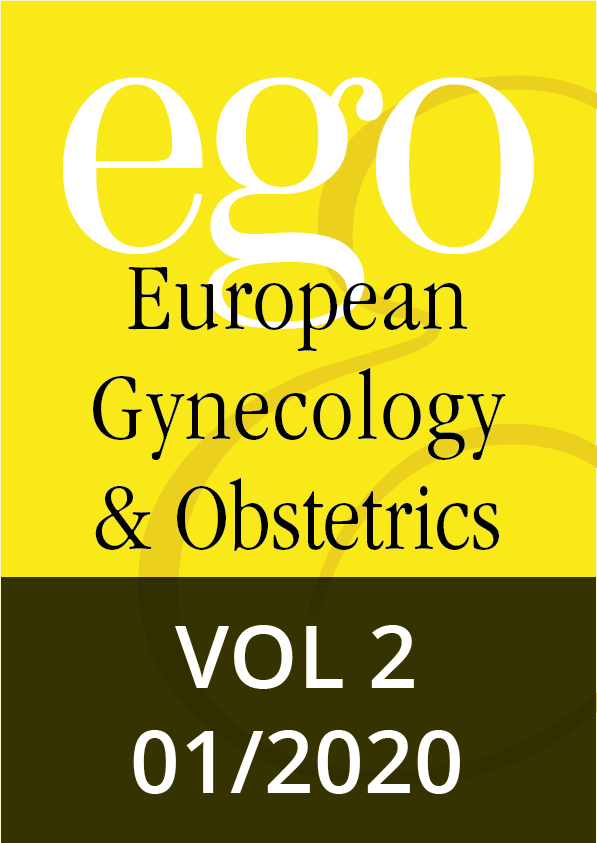Short reviews, 005–009 | DOI: 10.53260/EGO.202012
Short reviews, 016–021 | DOI: 10.53260/EGO.202014
Systematic review, 022–029 | DOI: 10.53260/EGO.202015
Systematic review, 030–035 | DOI: 10.53260/EGO.202016
Original articles, 036–041 | DOI: 10.53260/EGO.202017
Original articles, 042–046 | DOI: 10.53260/EGO.202018
Original articles, 047–049 | DOI: 10.53260/EGO.202019
Original articles, 050–055 | DOI: 10.53260/EGO.2020110
Original articles, 056–061 | DOI: 10.53260/EGO.2020111
Original articles, 062–067 | DOI: 10.53260/EGO.2020112
Uncommon vulvar findings in children and adolescents referred to a tertiary center over 14 years:a retrospective study and review of the literature
Abstract
Background and Purpose: Vulvar complaints are particularly common among children and adolescents; the etiologies largely depend on patient age. Most clinicians are not familiar with the normal variations of the female external genitalia, and this results in many unnecessary referrals. The aim of this study was to describe the frequencies of uncommon vulvar findings (other than ambiguous genitalia or vulvovaginitis) in children and adolescents examined in a tertiary referral center over a 14-year period.|
Methods: Records of girls (ranging from newborns up to the age of 18 years) who attended a tertiary Pediatric-Adolescent Gynecology and Reconstructive Surgery Center with vulvovag-inal complaints during the period 2004-2017 were studied retrospectively. Patient age, rea-son for referral, presenting complaints, key aspects of clinical examination, diagnosis and management were recorded for each patient. Patients with ambiguous genitalia or vulvo-vaginitis were excluded from the analysis.|
Results: A total of 67 females (37 adolescents and 30 children) were included in the study. Labial minora hypertrophy and labial adhesions were the most common findings in 18 (26.9%) and 17 (25.4%) of the cases, respectively. Less common diagnoses were genital warts in 7 (10.4%) patients, genital trauma in 5 (7.5%) patients, labia minora masses in 5 (7.5%) adolescents, and unilateral labial majora inflammation in 2 (3%) patients. Among the adolescents with labia minora masses, three were diagnosed with vascular malfor-mations, one patient underwent cyst removal, and one suffered labial minora inflammation. Other rare diagnoses included stenosis of the vaginal opening secondary to lichen sclerosus in 1 (1.5%) adolescent and extensive unilateral hemangioma of the vulva in 1 (1.5%) 15-month-old child. Finally, in 11 (16.4%) girls, no pathology was identified.|
Conclusions: Comprehensive external genitalia examination is an important part of periodic health checks in girls (children and adolescents), given that there are some, albeit relatively few, genital findings that require immediate referral to a child and adolescent gynecologist in order to ensure timely intervention and the best possible long-term outcome for the young girl.
Keywords: genital warts, labial adhesions, labial hypertrophy, lichen sclerosus., straddle injury, vascular malfor-mation, Vulva
Citation: Tsimaris P.,Apostolaki D.,Athanasopoulos N.,Bacopoulou F.,Deligeoroglou E.,Creatsas G., Uncommon vulvar findings in children and adolescents referred to a tertiary center over 14 years:a retrospective study and review of the literature, EGO European Gynecology and Obstetrics (2020); 2020/01:022–029 doi: 10.53260/EGO.202015
Published: January 1, 2020
ISSUE 2020/01

Short reviews, 005–009 | DOI: 10.53260/EGO.202012
Short reviews, 016–021 | DOI: 10.53260/EGO.202014
Systematic review, 022–029 | DOI: 10.53260/EGO.202015
Systematic review, 030–035 | DOI: 10.53260/EGO.202016
Original articles, 036–041 | DOI: 10.53260/EGO.202017
Original articles, 042–046 | DOI: 10.53260/EGO.202018
Original articles, 047–049 | DOI: 10.53260/EGO.202019
Original articles, 050–055 | DOI: 10.53260/EGO.2020110
Original articles, 056–061 | DOI: 10.53260/EGO.2020111
Original articles, 062–067 | DOI: 10.53260/EGO.2020112
